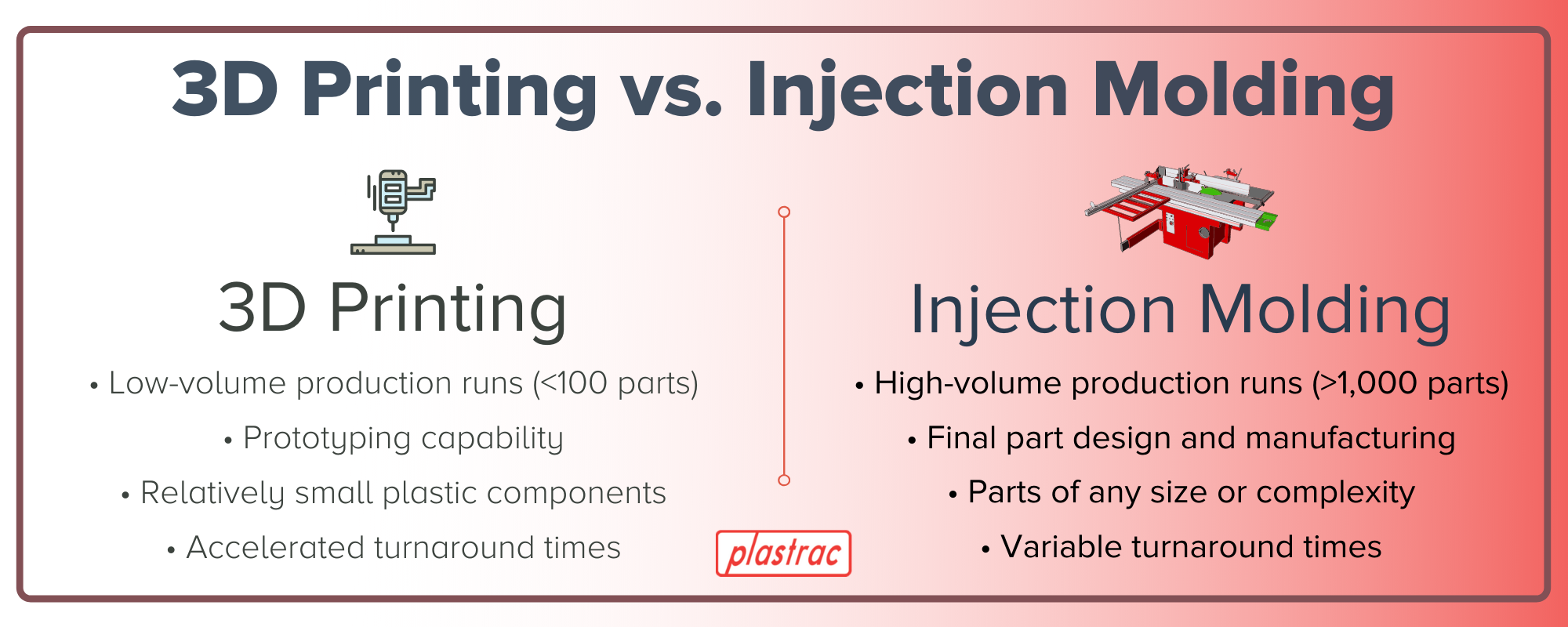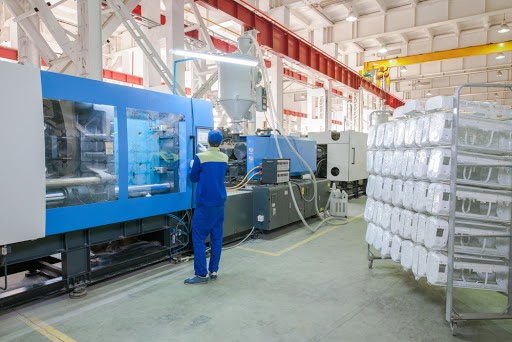In today’s testing and manufacturing landscape, both 3D printing and plastic injection molding are viable options for producing complex plastic components. While initially regarded as competing technologies, both techniques are now considered to have distinct advantages and can be used in tandem to optimize production efficiency.
For original equipment manufacturers (OEMs) curious about whether plastic injection molding or 3D printing is ideal for their next project, it’s essential to understand their respective strengths, standard applications, and how they can be used concurrently to support one another.
When to Use Either 3D Printing and Plastic Injection Molding
Let’s take a look at 3D printing and plastic injection molding’s value propositions:

Both options are helpful in their own right; 3D printing grants engineers the power to create plastic designs in a confined space and bring them to life in a matter of hours. Injection molding, on the other hand, reigns supreme for quality and value as it’s commonly used to produce high-volume runs of complex plastic designs reliably.
In truth, the majority of today’s plastic parts are manufactured with plastic injection molding. This standard is reasonable, given how the process helps OEMs have full control over quality, costs, and design intricacies related to any given project.
Design Customization Considerations
3D printing technology’s ability to create part designs and prototypes in a short time frame has predicated its popularity for a variety of applications. For example, the medical industry has embraced its quick turnaround capability to create custom items that assist the healthcare community in conducting vital research and expediting financial and time-sensitive facets of supply-chain management. However, plastic injection molding’s contributions provide unparalleled value by consistently producing large quantities of defect-free medical devices and components.
Regarding 3D printing and plastic injection molding as complementary technologies instead of competing processes is beneficial for OEMs and molders alike. Blending these two techniques as situations call for it can help shorten pre-production iteration cycles and allow for optimal testing, manufacturing, and final results.
When it comes to manufacturing needs, there’s no blanket solution for every business. As such, it’s imperative to consult experts on technologies and processes that are perfect for your industry’s demands. For more information about our plastics material blending and loading systems, contact us today!
